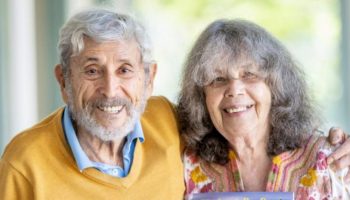I attended the University of British Columbia in Vancouver for my undergraduate studies, and as a recent immigrant to Canada at that time, I was intrigued by the First Nations Longhouse, a “home away from home” to support Indigenous students at the university. During my time at the university and continuing to this day, the university publicly proclaims that “UBC Vancouver is situated in the traditional, ancestral and unceded territory of the Musqueam — People of the River Grass.” The first time I heard this, I didn’t quite understand what was being acknowledged or, more importantly, why it was being acknowledged. My curiosity led me to dig deeper into the history of Canada and to better understand the historical and contemporary relationships between Indigenous communities of western Canada, the Canadian government and non-Native people. My explorations helped me better understand the socio-cultural practice of land acknowledgements.
Land acknowledgement is not a new concept. Many Native nations have historically practiced this tradition for centuries — to start gatherings and ceremonies with a recognition of the traditional and ancestral keepers of the land. In modern practice, both Native communities and non-Native communities have adopted this practice. Companies and organizations might list a statement on their website, or even have a plaque on their grounds. Conferences often print one in the conference guidebook. Speakers in academic and non-academic settings might start their remarks with such a statement. Chautauquans may have experienced speakers on our stages doing the same. In short, land acknowledgements have become a much more common practice.
If you are not familiar with land acknowledgements, you might be wondering why more and more people are adopting this practice. One prime benefit is to draw attention to the history of the land and the communities who inhabited it. This serves an educational purpose, as it did for me at UBC. It may also simply be a way to give thanks to those who have literally taken care of the lands — historically and in the contemporary context. A parallel practice, found in many faith traditions, is to take a moment before a meal to thank a higher power and/or those who have produced and prepared the food for our enjoyment and nourishment – simply a moment to pause and give gratitude. In some cases, the statement might draw attention to Indigenous communities that still might be in the surrounding area, so that we can recognize their continued presence. In other instances, it might be to draw attention that lands are “unceded,” a word commonly found in such acknowledgements.
Not everyone sees the value of a land acknowledgement. Some people simply write it off as an act of political correctness. Others see it as “performative allyship” — something that makes the speaker look caring or thoughtful, but ultimately an act that has no material impact on Indigenous communities. Others argue about when and how often to do a land acknowledgment — before every public gathering, or only during “significant” events? The practice of land acknowledgment varies greatly from community to community.
When I arrived at Chautauqua two years ago, a few people asked me to write one as soon as possible. I politely declined to do so. Here’s why: I think we risk creating more harm when well-intentioned organizations and people write these statements without ever developing a relationship with the Indigenous communities that are still present near and with us. The Seneca people, part of the Haudenosaunee Confederacy, are still here. Writing a statement without ever starting a conversation or relationship-building process with them seemed “off” to me. A statement might serve as a starting point, but it needs to be rooted in a desire and concerted effort to build ongoing relationships. Writing a statement in isolation is easy. Building a relationship is hard.
I have searched for examples where organizations have built intentional relationships with Indigenous communities prior to issuing a land acknowledgement, and I have not found one yet. I have been pondering what such a relationship might look like. Is it about inviting Native speakers? Understanding the history and contemporary struggles of the local Indigenous communities? Appreciating cultural practices, including the traditional ways of caretaking for the lands and the environment? What could we learn from them, and what might we have to offer in return? I am not sure that I have all the answers, or if I am even thinking about this in the right way, but I would love to hear your thoughts.
Amit Taneja
Senior Vice President
Chief Inclusion, Diversity, Equity & Accessibility Officer





